If you’ve ever wondered about the best ways to take herbs, you’re not alone. Herbal remedies come in many forms, but the three most common are herbal powders, tinctures, and capsules.
Each has its own advantages for taste, convenience, absorption, and shelf life.
In this guide, you’ll learn:
- How each herbal form works
- The pros and cons of powders, tinctures, and capsules
- How to make your own herbal preparations
- Tips for storing herbs so they keep their potency
- How to grow your own herbs for any form you choose
Whether you’re new to herbal remedies or refining your routine, this will help you choose the right form for your needs, and get the most from every leaf, root, and flower.
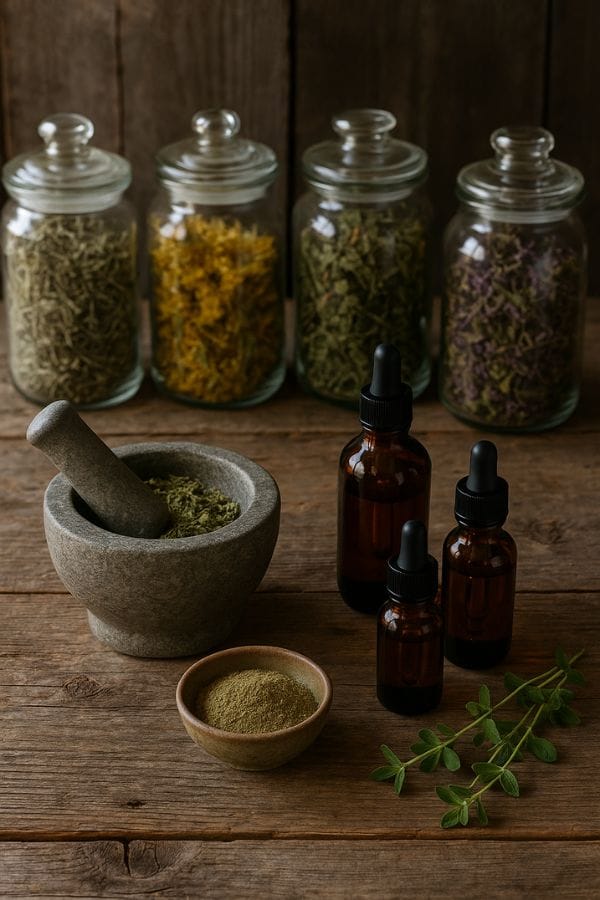
1. Best Ways to Take Herbs: Herbal Powders
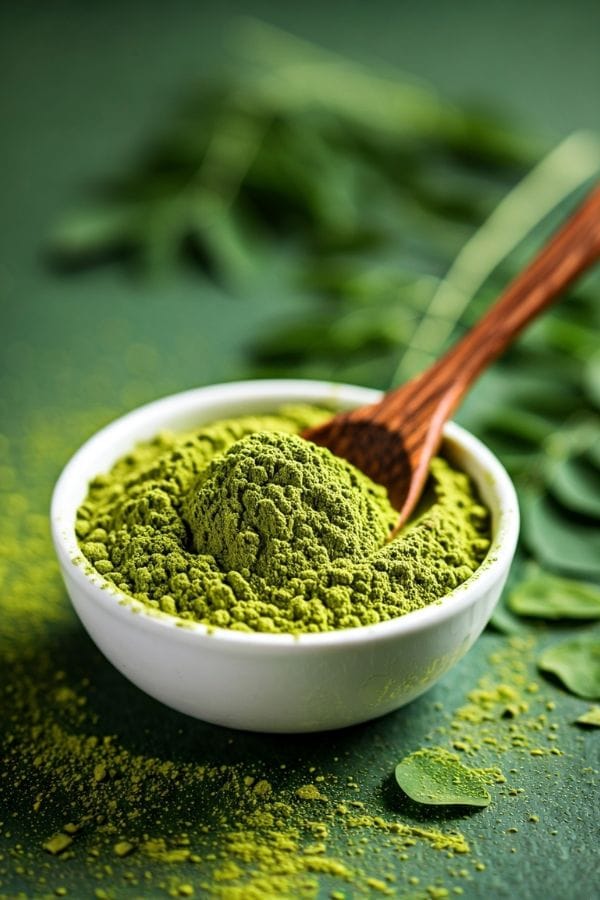
When people ask about the best ways to take herbs, herbal powders are often high on the list for their versatility and affordability. If you’ve ever wondered how to use herbal powders, the options are endless, from smoothies and teas to homemade capsules.
Why they’re a top choice: Herbal powders are made by drying and finely grinding herbs, which makes them easy to measure, mix, and store for up to two years (Oregon State University guide on drying herbs).
How to use herbal powders
- Stir 1 teaspoon into a smoothie or juice for a quick nutrient boost
- Blend into yogurt, oatmeal, or baked goods
- Steep in hot water to make herbal tea
- Fill your own capsules for easy, taste-free dosing
Benefits of herbal powders
- Affordable and widely available
- Can be used in many ways (teas, capsules, pastes)
- Long shelf life with proper storage
Drawbacks
- Some herbs have a strong, earthy taste
- Must be stored in airtight containers away from heat and light
- ✅ High-quality powdered herbs from Herb Affair
- ✅ Glass herb storage jars. Protects freshness and flavor
📌 Pro Tip: If you’re new to powders, start with half a teaspoon in a smoothie until you get used to the flavor.
2. Herbal Tinctures – Fast-Acting & Long-Lasting
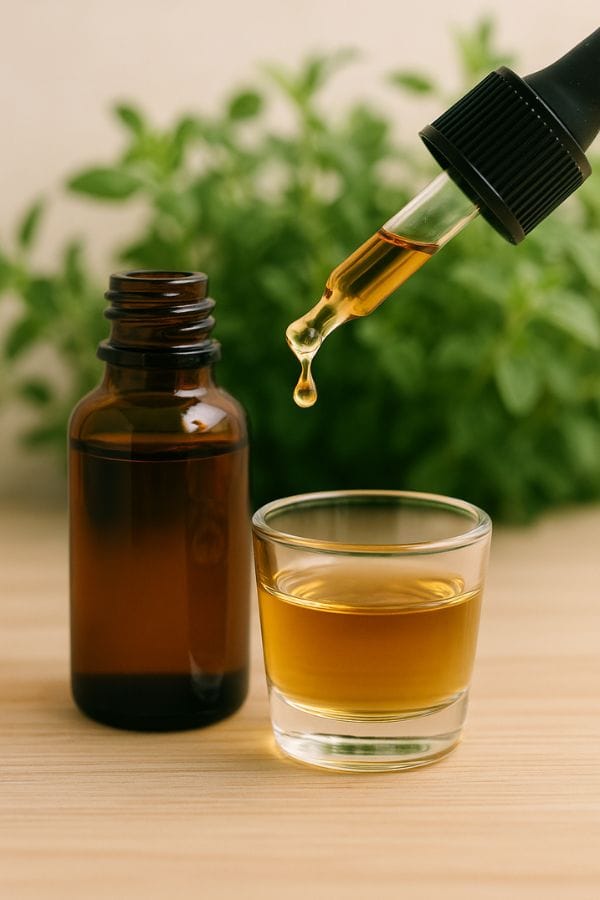
What they are: Potent liquid extracts made by steeping herbs in alcohol or glycerin.
Why they’re great: Tinctures absorb quickly into the body, making them one of the fastest ways to take herbs (NCCIH: Dietary and Herbal Supplements).
Benefits of herbal tinctures
- Rapid absorption into the bloodstream
- Shelf life can span years
- Portable and easy to measure
Drawbacks
- Strong flavor
- Alcohol content may not suit everyone (glycerin tinctures are an option)
How to use: Take a few drops under the tongue, dilute in juice or water, or add to herbal tea.
Pro Tip: The best way to take herbs for travel might be tinctures, they’re lightweight and long-lasting.
3. Finding the Best Way to Take Herbs for Your Needs: Herbal Capsules
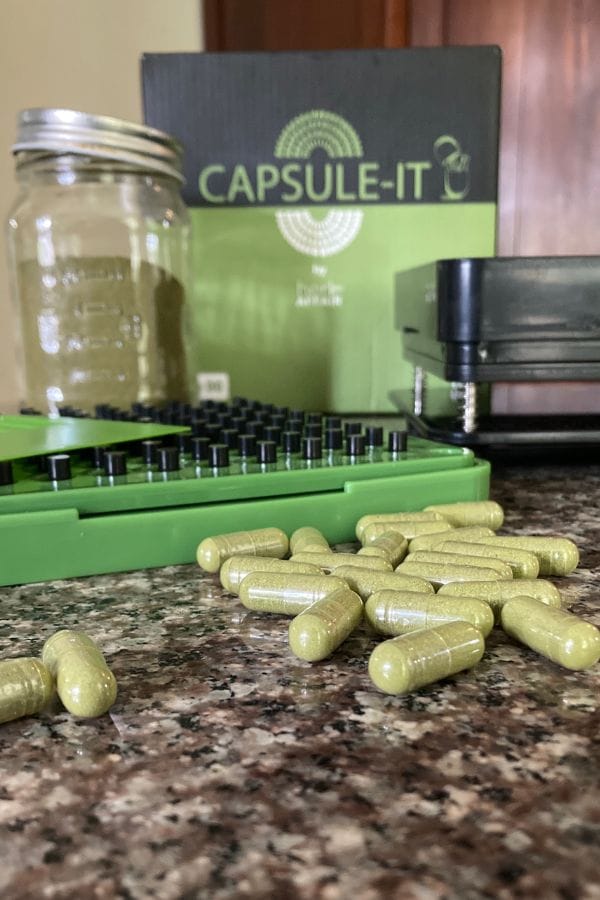
If you prefer the simplest, most discreet option, capsules might be the best way to take herbs for you. They’re especially handy if you want a precise dose without tasting the herbs. Many people also search for how to take powder supplements, and capsules are the easiest answer, they package powdered herbs into a form that’s quick and portable.
Why they’re popular: Capsules make it one of the best ways to take herbs on a busy schedule. You can buy them pre-filled or make your own at home.
How to take powder supplements in capsule form
- Swallow with a full glass of water for best absorption
- Take with food if the herb is strong or can cause stomach upset
- Use a consistent daily schedule to get the most benefit
Benefits of herbal capsules
- No taste, perfect for bitter herbs
- Portable and mess-free
- Accurate dosing every time
Drawbacks
- Slightly slower absorption than tinctures
- Making them at home requires a capsule machine and empty capsules
DIY Capsule-Making Tools:
Pro Tip: Making your own capsules ensures freshness, lets you mix blends, and can save money long-term.
4. Herbal Honeys – Sweet, Soothing & Shelf-Stable
What they are: Herbal honeys are made by infusing dried herbs into raw honey, creating a delicious remedy that’s perfect for sore throats, digestion, or simply elevating your tea.
How to make herbal honey:
- Use dried herbs like thyme, lavender, or lemon balm.
- Fill a clean jar ⅓ full with herbs, then pour raw honey to cover.
- Stir, seal, and let infuse for 1–2 weeks. Strain if desired.
Benefits:
- Naturally antimicrobial and soothing
- Great for kids and those avoiding alcohol
- Long shelf life if herbs are fully dried
Drawbacks:
- Sticky to measure and dose
- Not suitable for diabetics or sugar-sensitive users
Pro Tip: Try elderflower honey for seasonal allergies or ginger honey for digestion.
5. Herbal Infused Oils – Topical & Culinary Uses
What they are: Oils infused with herbs like calendula, rosemary, or garlic, used for skin care, massage, or cooking.
How to make infused oils:
- Use dried herbs to avoid spoilage.
- Cover herbs with olive or avocado oil in a glass jar.
- Let sit in a warm spot for 2–3 weeks, then strain.
Benefits:
- Great for salves, balms, and culinary use
- Easy to customize blends
- Nourishing for skin and hair
Drawbacks:
- Must be made carefully to avoid mold
- Shorter shelf life if moisture is present
Pro Tip: Use solar infusion for gentle heat and vibrant oils.
6. Herbal Vinegars – Tangy, Versatile & Safe
What they are: Vinegars infused with herbs like basil, garlic, or lemon balm, used for digestion, cooking, or as a base for oxymels.
How to make herbal vinegar:
- Fill a jar ⅓ with herbs, top with apple cider vinegar.
- Let infuse for 2–3 weeks, then strain and store.
Benefits:
- Safe and shelf-stable
- Supports digestion and mineral absorption
- Great for salad dressings and fire cider
Drawbacks:
- Strong taste may not suit everyone
- Can corrode metal lids—use wax paper barrier
Pro Tip: Combine vinegar and honey for an oxymel, perfect for immune support.
7. Grow Your Own Herbs for Any Form
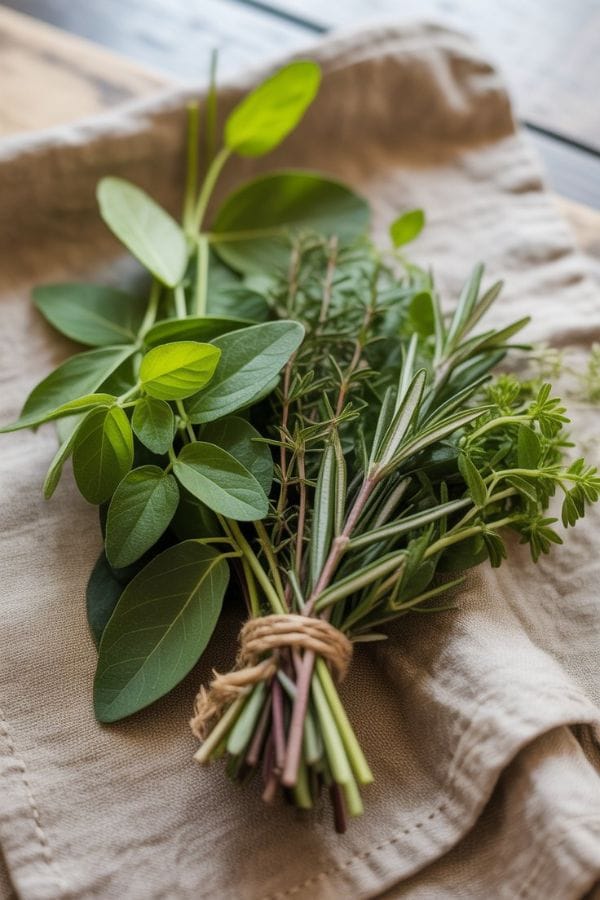
One of the best ways to take herbs is to grow them yourself and process them fresh. Homegrown herbs are more potent, cost-effective, and you control how they’re cultivated.
Beginner-friendly option:
- Nicole Apelian’s Medicinal Garden Kit – Includes seeds for 10 medicinal herbs with full growing instructions.
Learn more: Essential Tools for Herb Gardening
8. Storing Your Herbs for Maximum Potency
No matter which form you choose, proper storage is key.
- Food Dehydrator for Jerky, Fruits, and Herbs – Digital temperature control, 5 BPA-free trays, perfect for drying herbs year-round.
- Use airtight glass jars
- Keep herbs away from heat and sunlight
- Store in a cool, dark cupboard
🌿 Best Tool for Drying Fresh Herbs
Keep your homegrown herbs potent year-round with this compact dehydrator.
- 5 BPA-free trays – dry multiple herbs in one batch
- Digital timer & temperature control – protects flavor and nutrients
- Compact & powerful (400W) – perfect for any kitchen
- Multi-use – also great for fruit, mushrooms, and healthy snacks
- 𝐂𝐨𝐦𝐩𝐚𝐜𝐭 & 𝐄𝐟𝐟𝐢𝐜𝐢𝐞𝐧𝐭 𝐅𝐨𝐨𝐝 𝐃𝐫𝐲𝐞𝐫 𝐟𝐨𝐫 𝐇𝐨𝐦𝐞 𝐊𝐢𝐭𝐜𝐡𝐞𝐧𝐬: Small food dehydrator designed to fit seamlessly into your kitchen, bu…
- 𝟓 𝐓𝐫𝐚𝐧𝐬𝐩𝐚𝐫𝐞𝐧𝐭 𝐁𝐏𝐀-𝐅𝐫𝐞𝐞 𝐓𝐫𝐚𝐲𝐬 𝐟𝐨𝐫 𝐕𝐞𝐫𝐬𝐚𝐭𝐢𝐥𝐞 𝐃𝐫𝐲𝐢𝐧𝐠: This dehydrator for home use includes 5 stackable, food-grade, see-th…
- 𝐂𝐮𝐬𝐭𝐨𝐦𝐢𝐳𝐚𝐛𝐥𝐞 𝐃𝐫𝐲𝐢𝐧𝐠 𝐰𝐢𝐭𝐡 𝐓𝐢𝐦𝐞𝐫 & 𝐓𝐞𝐦𝐩𝐞𝐫𝐚𝐭𝐮𝐫𝐞 𝐂𝐨𝐧𝐭𝐫𝐨𝐥: Set the timer from 10 minutes to 48 hours and adjust the temperatu…
Glass Herb Storage Jar with Freshness Tracker
Keep your herbs fresh and organized with this large glass storage jar featuring a stainless steel lid with a built-in date indicator. Perfect for storing dried herbs, teas, coffee beans, or snacks, it’s BPA-free, durable, and stylish enough for your countertop.
- FRESHNESS TRACKING: Glass jar with a stainless steel lid featuring a month-and-day tracker to record storage or expirati…
- MULTIFUNCTIONAL STORAGE SOLUTION: Perfect for candy, snacks, coffee, tea, sugar, pasta, legumes, cereal and pet treats; …
- KITCHEN AND PANTRY READY: Spacious 1735ML/59 oz capacity With dimensions 7.5″H x4.9″W x6.9″L, sleek design made to sit n…
9. Herbal Form Comparison Table
Absolutely, Stacie! Here’s an updated and expanded version of your Herbal Form Comparison Table, now including infused oils, herbal honeys, and herbal vinegars to give your readers a fuller picture of their options:
Herbal Form Comparison Table
| Form | Shelf Life | Best For | Pros | Cons |
|---|---|---|---|---|
| Powders | 1–2 years | Smoothies, teas, capsules | Versatile, affordable | Strong taste |
| Tinctures | Years | Fast absorption, travel | Long shelf life, rapid absorption | Taste, alcohol content |
| Capsules | 1–2 years | Precise dosing, no taste | Convenient, mess-free | Requires capsule machine |
| Infused Oils | 6–12 months | Topical use, culinary applications | Nourishing, customizable | Risk of spoilage if moisture is present |
| Herbal Honeys | 1+ years | Soothing remedies, teas | Sweet, kid-friendly, antimicrobial | Sticky, not suitable for sugar-sensitive |
| Herbal Vinegars | 1–2 years | Digestion, cooking, oxymels | Tangy, mineral-rich, shelf-stable | Strong taste, can corrode metal lids |
Final Thoughts – Choosing the Best Ways to Take Herbs
There’s no single “right” way to take herbs. You might love tinctures for travel, powders for smoothies, and capsules for those stronger-tasting plants.
The best way to take herbs is the one that fits your lifestyle and wellness goals. Start with quality herbs, store them well, and consider growing your own for the freshest, most potent remedies.
Get Started Today:

